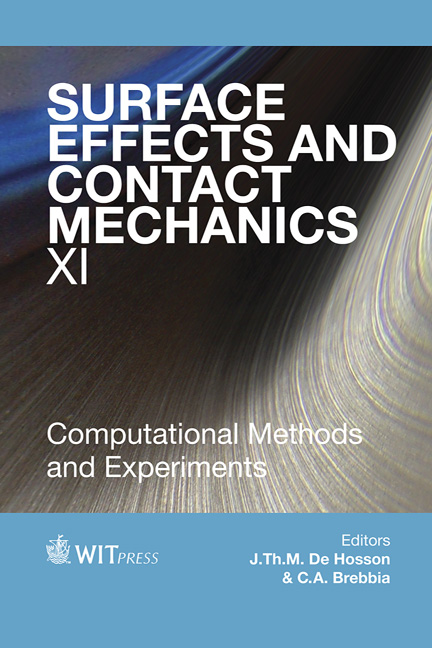Measurement Of Mechanical Properties Of Viscous Plastic Materials By Nanoindentation
Price
Free (open access)
Transaction
Volume
78
Pages
12
Page Range
121 - 132
Published
2013
Size
776 kb
Paper DOI
10.2495/SECM130101
Copyright
WIT Press
Author(s)
A.-C. Abdelouahab, P.-E. Mazeran, M. Rachik, F. Palama Bongo & J. Favergeon
Abstract
Nanoindentation is a widely used method for determining mechanical properties, such as hardness, and elastic modulus. Nevertheless, in the case of viscous materials, the time dependent response of the material generates a bulge on the unloading curve that leads to incorrect values of the contact stiffness and thus of the mechanical properties. This paper presents methods developed on two viscoplastic materials (indium and indium-tin eutectic) to measure the elastic modulus and the creep exponent. To fix the bulge problem, we propose to realise cyclic indentations in order to obtain unloading and reloading curves. Results show that the lower parts of these two curves are similar because creep behaviour becomes negligible. Thus, the values of the modulus calculated from the initial slope of the reloading curve are constant and in good agreement with the values obtained from standard tensile tests. Furthermore, a method has been developed to measure the creep exponent. It consists of measuring the contact pressure as a function of the strain rate during hold load plateaux. Experiments show that the average value of the creep exponent (3.7 for the indium-tin eutectic and 7.6 for indium) does not depend on the loading conditions and are in good agreement with values obtained from tensile and torsion tests (3.7 and 7.6 respectively). Keywords: nanoindentation, cyclic indentation, elastic modulus, creep exponent, viscoplasticity.
Keywords
Keywords: nanoindentation, cyclic indentation, elastic modulus, creep exponent, viscoplasticity.





